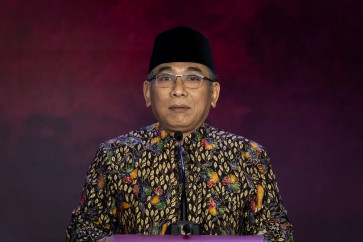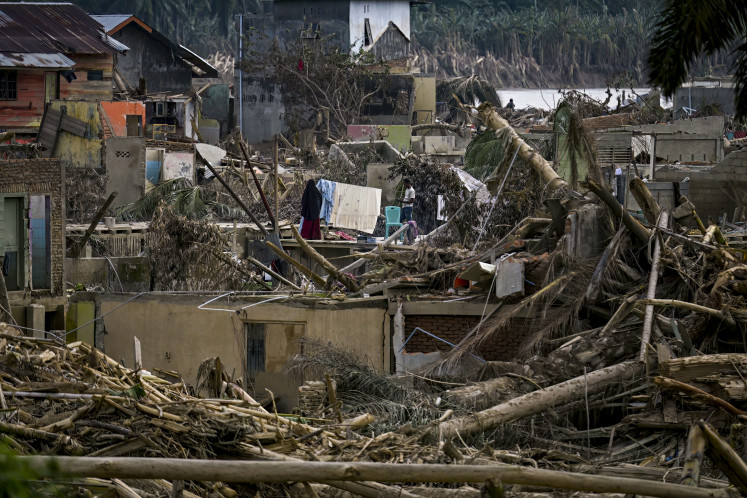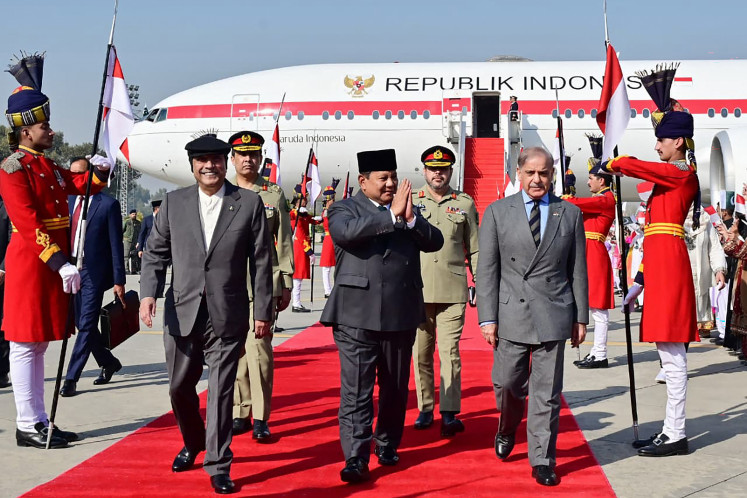Popular Reads
Top Results
Can't find what you're looking for?
View all search resultsPopular Reads
Top Results
Can't find what you're looking for?
View all search resultsIndonesia needs $32.42 billion for gas infrastructure
Indonesia will need at least US$32
Change text size
Gift Premium Articles
to Anyone
Indonesia will need at least US$32.42 billion to finance the development of the country's national gas pipeline project, which will connect gas fields and gas stations in the country's major cities.
Figures from the Energy and Mineral Resources Ministry's oil and gas directorate general show that out of the total amount, as much as $8.5 billion will be needed for pipeline development, $13 billion for construction of gas stations, $8 billion for liquefaction and re-gasification projects, $2.5 billion to establish city gas networks and $420 million for liquefied petroleum gas (LPG) processing and distribution facilities.
'We need investors to help us develop gas infrastructure, such as the pipeline network and mini-LNG [liquified natural gas] plant. We need the mini-plant because our resources are stranded gas,' oil and gas director general IGN Wiratmaja Puja said, referring to gas resources located in remote areas and in relatively small volumes.
Under the ministry's road map for gas infrastructure development, the new project will increase the gas pipeline network to 27,273 kilometers by 2025. As of the end of 2014, the country had 12,034 kilometers of pipeline, consisting of open access pipeline, upstream dedicated pipeline, downstream dedicated pipeline and private-used pipeline.
For liquefaction facilities, the country plans to build six large plants and 10 mini-plants by the end of 2025. Meanwhile for re-gasification facilities, as many as 11 floating storage and re-gasification units (FSRUs) and 66 land-based facilities are expected to be in operation by 2025. To date, the country only has two FSRU facilities in operation, which are in West Java and Lampung, and only one land-based re-gasification terminal, which is the converted Arun LNG plant in Aceh.
'Under the plan, the additional nine FSRUs will be located in Cilacap [Central Java], Banten, Pomalaa [Southeast Sulawesi], East Kalimantan, Ambon, Halmahera [Maluku] and Porong [East Java],' the ministry's gas road map states.
The roadmap also includes plans for Porong FSRU to be developed to replace a similar facility in Semarang, Central Java. The Porong FSRU will have a 1.5-million-ton capacity per year, and is estimated to be operational after 2020. Gas supplies for the plant will come from several nearby gas fields operated by Energi Mega Persada, Husky, Pertamina Hulu Energi and Santos.
The report said that 14 land-based re-gasification terminals would be established in 2016. The facilities will be located in Pomalaa, Lombok (West Nusa Tenggara), Makassar (South Sulawesi), Palu (Central Sulawesi), Medan (North Sumatra), Riau, Pontianak (West Kalimantan), Kendari (Southeast Sulawesi), Banjarmasin (South Kalimantan), Kupang (East Nusa Tenggara), Gorontalo, Ambon, Merauke (Papua) and Karimun island (Central Java).
While the government has set the gas infrastructure road map, PT Pertamina Gas (Pertagas), a subsidiary of state-owned oil and gas giant Pertamina, said that it planned to have seven re-gasification terminals and five liquefaction LNG plants by 2019. 'The facilities will be the solution for the gap in gas supply and demand,' Pertagas president director Hendra Jaya said.
Poor infrastructure has been an issue for gas distribution in the country, particularly because gas resources are mostly located in low demand or remote areas. Thus, the country has to transport gas that has been liquefied from, for example, Tangguh plant in Papua to Lampung FSRU, which will re-gasify the LNG before transferring it to customers. The lack of infrastructure has also caused gas producers to sell their gas overseas, which has raised concerns about the availability of supply when domestic demand grows in the future.










